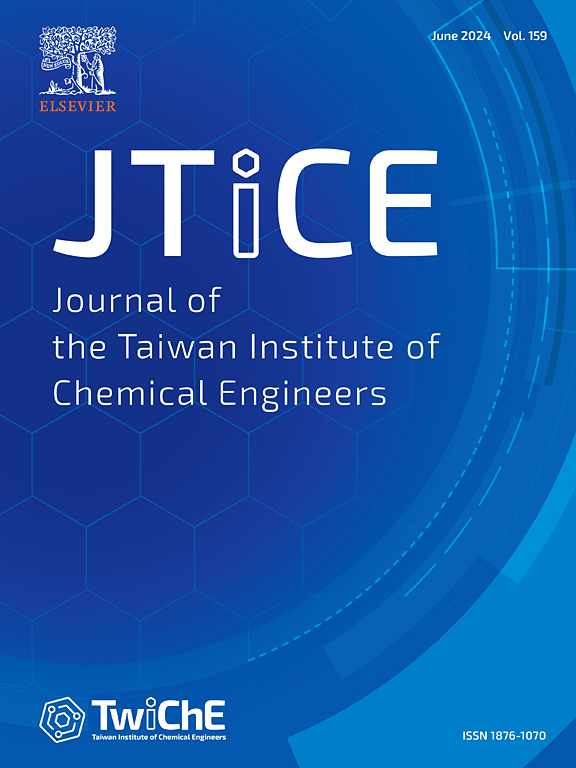Employing economic model predictive control for improving efficiency of the batch reactor carrying out decomposition of the Di-Cumyl-Peroxide
IF 5.5
3区 工程技术
Q1 ENGINEERING, CHEMICAL
Journal of the Taiwan Institute of Chemical Engineers
Pub Date : 2025-02-01
DOI:10.1016/j.jtice.2024.105864
引用次数: 0
Abstract
Background:
Batch reactors are used to produce agro-herbicides, often operating under metastable conditions. Exothermic reactions within these reactors can rapidly release large amounts of chemical energy, increasing the reaction rate and risking a runaway excursion. To prevent excessive heat dissipation, the reactor must operate within a lower mesophilic temperature range. The decomposition of dicumyl-peroxide is a notable example of a runaway reaction, characterized by multi-order thermo-kinetics with an Arrhenius temperature dependency. This decomposition rate is highly sensitive to factors such as Damkohler’s number, exothermic enthalpy, oxygen presence, substrate concentration, and initial temperature variations. Many kinetic parameters are not directly measurable in real-time applications.
Method:
(i) An economic stage cost is derived and integrated into a model-predictive-control (MPC) law to regulate coolant flow and manage exothermic heat dissipation, mitigating unmeasured disturbances and faults. (ii) For estimating unmeasured reactor states and uncertainties, a cubature Kalman filter with a singular-value-decomposition approach has been utilized. (iii) Event-triggered scheduling combined with cubature Kalman filter, reduced communication resource usage.
Significant findings
: The economics MPC controller tested on the dicumyl-peroxide system is compared with a standard nonlinear MPC rule, considering factors like cooling period, decomposition rate, and observer accuracy which ensures the effectiveness of the proposed algorithm.

求助全文
约1分钟内获得全文
求助全文
来源期刊
CiteScore
9.10
自引率
14.00%
发文量
362
审稿时长
35 days
期刊介绍:
Journal of the Taiwan Institute of Chemical Engineers (formerly known as Journal of the Chinese Institute of Chemical Engineers) publishes original works, from fundamental principles to practical applications, in the broad field of chemical engineering with special focus on three aspects: Chemical and Biomolecular Science and Technology, Energy and Environmental Science and Technology, and Materials Science and Technology. Authors should choose for their manuscript an appropriate aspect section and a few related classifications when submitting to the journal online.

 求助内容:
求助内容: 应助结果提醒方式:
应助结果提醒方式:


